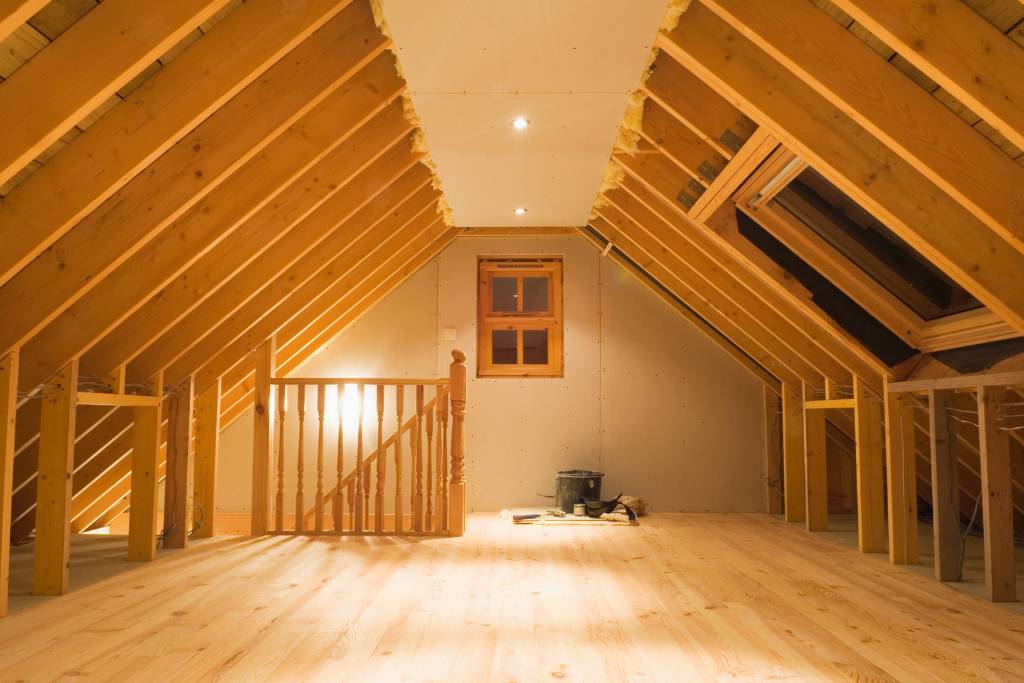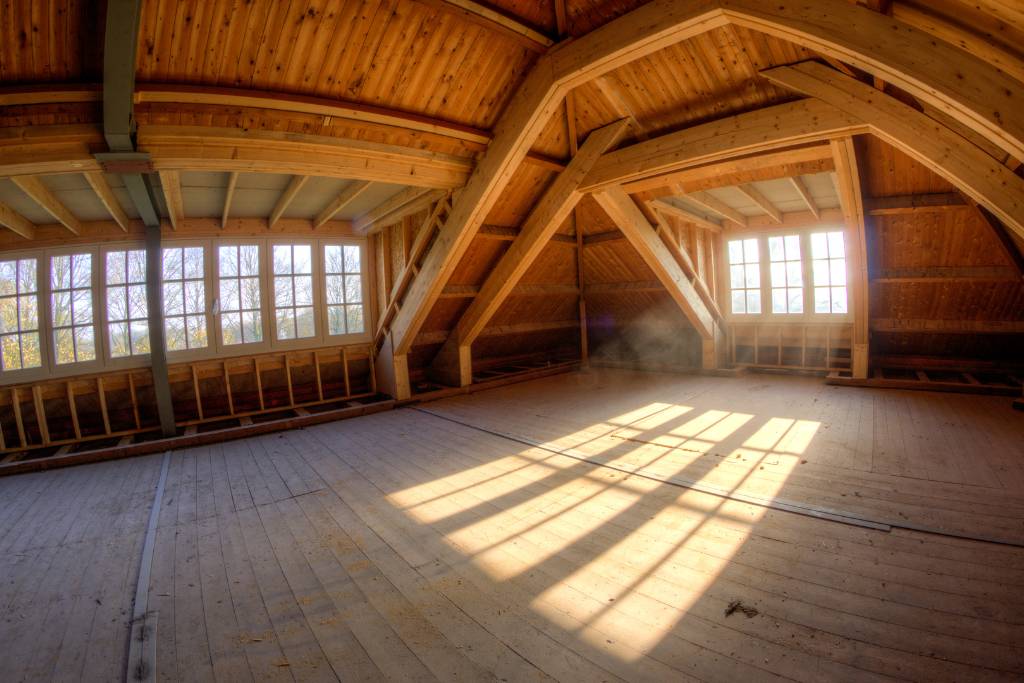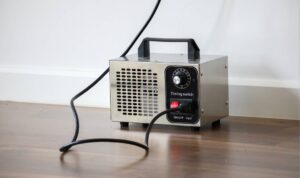Proper airflow and ventilation in the attic are crucial for maintaining the overall health and integrity of a home. Without adequate ventilation, moisture can build up in the attic, leading to mold growth, wood rot, and damage to the structural integrity of the home. This can result in costly repairs and pose health risks to the occupants.
Attic baffles play a key role in promoting airflow and preventing these issues. They are installed in the attic to ensure proper ventilation, allowing air to flow freely from the soffit vents to the attic vents, and then out of the attic. This helps to regulate the temperature, prevent moisture build-up, and reduce the risk of mold and wood deterioration.
By promoting proper airflow and preventing moisture build-up, attic baffles also contribute to energy efficiency. A well-ventilated attic helps to regulate the temperature in the home, reducing the strain on HVAC systems and ultimately saving money on energy costs. Additionally, by preventing moisture-related damage, attic baffles can also save homeowners from potential costly roof repairs.
In conclusion, ensuring proper airflow and ventilation in the attic, with the help of attic baffles, is crucial for maintaining a healthy and efficient home.
Overview of baffles and their role in attic ventilation system
Baffles play a crucial role in maintaining the proper ventilation of an attic space. These components are designed to ensure the efficient flow of air within the attic, preventing the build-up of moisture and heat. In this article, we will provide an overview of baffles and their role in the attic ventilation system, exploring their importance in promoting air circulation, controlling temperature, and protecting the overall integrity of the attic space. Understanding the function and significance of baffles in the context of attic ventilation is essential for homeowners and contractors alike, as it directly impacts the overall health and efficiency of the home’s structure.
What are Attic Baffles?
Attic baffles, also known as insulation baffles or ventilation baffles, are crucial components in home ventilation systems. They come in various types, each with its own specific characteristics and uses.
- Cardboard baffles are lightweight, easy to install, and cost-effective. They are suitable for temporary use and provide basic ventilation support.
- Foam baffles are more durable and provide better insulation and air flow control. They are commonly used in climates with extreme temperatures.
- Plastic baffles are versatile and can withstand harsh weather conditions. They are ideal for long-term use and offer excellent ventilation and moisture control.
- PVC baffles are durable, moisture-resistant, and provide superior ventilation. They are suitable for homes in humid climates and can withstand heavy insulation materials.
Using attic insulation baffles in a home offers several benefits, including preventing insulation from blocking soffit vents, ensuring proper air flow, reducing the risk of moisture buildup, and maintaining a consistent temperature throughout the attic space. Overall, attic baffles play a crucial role in promoting a healthy and well-ventilated home environment.
Definition and purpose of attic baffles
Attic baffles, also known as rafter vents, are small barriers installed in the attic to facilitate airflow and prevent condensation and water damage. Their primary purpose is to ensure proper ventilation and airflow throughout the attic space, specifically along the underside of the roof sheathing. Attic baffles create a clear pathway for air to flow from the soffit vents up to the ridge vent, allowing for air circulation and preventing the buildup of moisture.
These vent channels are typically made of materials such as polystyrene, cardboard, or foam, and are installed between the rafters to maintain the integrity of the insulation and prevent it from blocking the airflow. The installation process involves placing the baffles along the underside of the roof, ensuring they don’t block the soffit vents and leave a clear path for air to flow upwards.
The benefits of attic baffles include improved insulation performance, as they prevent the insulation from compressing and allow for proper air circulation, which can help maintain a comfortable temperature in the attic and throughout the home. Additionally, they contribute to better air quality by reducing the risk of condensation, mold, and water damage.

Different types of baffles available in the market
When it comes to managing sound and controlling acoustics, baffles have proven to be an essential tool. There are various types of baffles available in the market, each designed to suit different spaces and acoustic needs. From hanging baffles to wall-mounted and ceiling baffles, there is a wide range of options to choose from. Understanding the different types of baffles and their unique benefits can help in creating the ideal acoustic environment for any space. Whether it’s a crowded restaurant, a noisy office, or a music studio, selecting the right type of baffle is crucial for achieving the desired sound control and acoustic performance.
The Need for Attic Ventilation
Attic ventilation is crucial for maintaining a healthy and efficient home. Proper airflow in the attic helps to regulate the temperature, reduce moisture buildup, and prevent damage to the roof and structure. Attic baffles play a key role in ensuring that airflow is distributed evenly throughout the attic space. They help to channel air from the soffit vents up into the attic, preventing it from getting blocked by insulation.
Improved airflow in the attic brings several benefits. Firstly, it increases energy efficiency by helping to regulate the temperature in the attic, which in turn reduces the strain on the HVAC system and lowers energy bills. Additionally, proper attic ventilation helps to prevent roof rot by reducing the buildup of moisture and preventing the deterioration of the roof structure. It also protects against mold growth by keeping the attic dry, which in turn helps to maintain the indoor air quality of the home.
Installation of attic baffles is essential to ensure that the benefits of attic ventilation are fully realized. Without proper installation and maintenance of baffles, the airflow in the attic can be restricted, leading to various issues such as higher energy costs and potential structural damage. Therefore, it is important to prioritize the installation of attic baffles to maintain a well-ventilated and efficient home.
Understanding the importance of attic ventilation for a healthy home
Attic ventilation plays a critical role in maintaining a healthy home environment. Proper ventilation helps prevent moisture build-up, which can lead to mold formation and potential structural damage. By allowing air to circulate in the attic, ventilation reduces the likelihood of humidity and condensation, which are breeding grounds for mold and mildew. This, in turn, safeguards the structural integrity of the home and protects the health of its inhabitants.
In addition to preventing moisture-related issues, proper attic ventilation can also contribute to increased energy efficiency and reduced energy bills. By allowing hot air to escape from the attic during the summer, ventilation helps keep the home cooler, reducing the need for excessive air conditioning. During the winter, ventilation helps prevent the build-up of warm, moist air, which can lead to ice dams and roof deterioration.
Maintaining attic ventilation is critical for a healthy home because it prevents moisture-related problems, promotes energy efficiency, and safeguards the structural integrity of the property. By implementing and maintaining proper attic ventilation, homeowners can enjoy a healthier living environment while also reaping the financial benefits of reduced energy bills.
Consequences of inadequate ventilation in the attic
Inadequate ventilation in the attic can lead to a variety of consequences that can have significant negative impacts on the home and its inhabitants. Proper ventilation is essential for maintaining the overall health of the home’s structure and the safety and comfort of those living inside. Without adequate ventilation, the attic can become a breeding ground for moisture and mold, leading to potential structural damage and health risks for the residents. It’s important to understand the consequences of poor attic ventilation in order to take proactive measures to ensure the well-being of the home and its occupants.
- Structural Damage: Inadequate ventilation in the attic can lead to excess moisture buildup, which can cause wooden structural elements to rot and decay. This can weaken the overall integrity of the roof and attic, leading to costly repairs and potential safety hazards.
- Increased Energy Costs: Without proper ventilation, the attic can become a heat trap, leading to increased temperatures throughout the home. This can result in higher energy bills as the HVAC system works harder to maintain a comfortable temperature.
- Mold and Mildew Growth: Moisture buildup in the attic can create the ideal environment for mold and mildew to thrive. This can pose serious health risks for the home’s occupants, particularly those with allergies or respiratory issues.
How Do Attic Baffles Work?
Attic baffles are designed to facilitate the proper airflow from soffit vents to the attic space. By positioning the baffles between the rafters, they create a channel for air to flow, preventing insulation from blocking the soffit vents. This airflow helps to regulate the temperature in the attic, preventing heat buildup that can compromise the effectiveness of the insulation. Additionally, attic baffles protect the insulation from moisture and mold by allowing for proper ventilation.
Attic baffles are commonly made from materials such as foam, cardboard, or plastic. Each material has its own benefits, with foam baffles providing a high level of insulation and airtightness, cardboard baffles being cost-effective and environmentally friendly, and plastic baffles offering durability and resistance to moisture.
These materials aid in proper insulation by ensuring that there is a clear pathway for air to move from the soffit vents to the attic, improving air quality and preventing moisture buildup. Ultimately, attic baffles play a crucial role in maintaining a well-insulated and ventilated attic space.

Explaining the functioning of baffles in promoting airflow
Baffles play a crucial role in promoting airflow in the attic by creating a channel for air circulation. These small barriers are installed between the attic insulation and the roof to prevent insulation from blocking the soffit vents, thus allowing air to flow freely. By creating a clear pathway for air to move from the soffit vents to the ridge or gable vents, baffles help to prevent moisture buildup by ensuring proper ventilation. This airflow also helps to regulate the attic temperature and improve energy efficiency by reducing the heat buildup in the attic during hot months and preventing ice dams in colder months.
Proper attic ventilation, facilitated by baffles, has several benefits. It reduces the strain on HVAC systems, leading to lower utility bills. Additionally, it helps to maintain a consistent indoor temperature, leading to improved energy efficiency. Furthermore, promoting airflow in the attic through the use of baffles also improves indoor air quality by preventing the buildup of mold and mildew. Overall, the installation of baffles and the promotion of airflow in the attic is essential for maintaining a healthy, energy-efficient home.
Role of baffles in preventing insulation from blocking soffit vents
Soffit vents play a crucial role in keeping attics properly ventilated by allowing air to flow in and out. However, insulation can often block these vents, reducing their effectiveness. This is where baffles come in. Baffles are installed in the attic to create a pathway for air to flow from the soffit vents to the rest of the attic and out through the ridge vents. They help prevent insulation from clogging the soffit vents and ensure that ventilation is maintained. Baffles also help to prevent moisture buildup and maintain a consistent temperature in the attic. Without baffles, insulation can block the soffit vents, leading to poor ventilation, heat buildup, and potential issues with condensation and mold. Therefore, the role of baffles in preventing insulation from blocking soffit vents is crucial for the overall health and functionality of the attic ventilation system.
Types of Attic Baffles
There are several types of attic baffles available, including cardboard, foam, plastic, and PVC.
Cardboard baffles act as a channel for airflow from the attic soffit vents to pass through, preventing insulation from blocking the vents and allowing for proper ventilation. Foam baffles provide a similar function, but with the added benefit of insulation, helping to maintain energy efficiency and improving air quality by reducing the risk of mold or mildew growth. Plastic baffles, also known as rafter vents, are durable and lightweight, allowing for easy installation and efficient airflow. PVC baffles are resilient and weather-resistant, providing long-lasting protection against moisture and maintaining insulation effectiveness.
Each type of attic baffle works to channel airflow from attic soffit vents, thereby preventing condensation build-up, improving energy efficiency, and maintaining air quality by reducing the risk of mold growth. These benefits ultimately contribute to a healthier, more comfortable living environment and help to extend the lifespan of the home’s insulation.
FAQ’S:
Can I install attic baffles through soffit vents?
Yes, attic vent baffles are often installed through the exterior soffit vents. They help maintain the airflow between the soffit area and the attic, allowing for effective ventilation and minimizing the risk of air leaks.
How do attic baffles support insulation?
Attic baffles create a clear space between the roof deck and the attic floor, ensuring that insulation does not block the airflow. This prevents insulation from compressing or becoming inefficient by allowing it to perform at its maximum potential.
Are roof vents necessary if I have attic baffles?
Yes, roof vents are essential to work in conjunction with attic baffles. Roof vents help expel warm air and moisture from the attic space, while attic baffles ensure proper airflow and prevent insulation from blocking the ventilation channels.
Need professional help? contact Attic Crew today.



